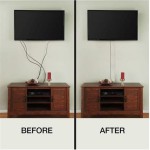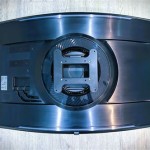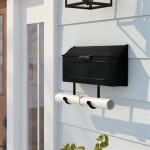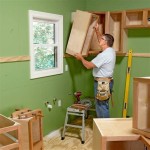Propane Wall Mount Heater With Thermostat: A Comprehensive Guide
Propane wall mount heaters with thermostats offer an efficient and convenient solution for supplemental heating in a variety of environments. These units are designed to be permanently installed on a wall, saving valuable floor space. The integrated thermostat provides precise temperature control, contributing to energy savings and a more comfortable environment. This type of heater is particularly well-suited for garages, workshops, cabins, sunrooms, and other areas where a consistent and easily adjustable heat source is desired.
The core function of a propane wall mount heater is to convert the chemical energy stored in propane into thermal energy. Propane is a liquefied petroleum gas (LPG) that burns relatively cleanly, producing heat and minimal byproducts when properly combusted. The heater draws propane from a connected tank through a regulator that controls the gas pressure. The propane is then delivered to a burner assembly, where it is mixed with air and ignited. The resulting flame heats a heat exchanger, typically made of metal, which then radiates heat into the surrounding space. A thermostat monitors the ambient temperature and regulates the gas flow to the burner, maintaining the desired setpoint.
The advantages of using a propane wall mount heater with a thermostat are numerous. Firstly, it offers efficient heating. Propane heaters are known for their high BTU (British Thermal Unit) output, enabling them to quickly heat large spaces. Secondly, the wall-mounted design saves valuable floor space, making it ideal for areas where space is limited. Thirdly, the thermostat allows for precise temperature control, preventing overheating and reducing energy consumption. Fourthly, propane is a relatively affordable and readily available fuel source. Finally, these heaters are generally easy to operate and maintain.
Selecting the appropriate propane wall mount heater with a thermostat requires careful consideration of several factors. These include the size and insulation of the space to be heated, the desired BTU output, the type of thermostat, safety features, and installation requirements. It is crucial to choose a heater that is properly sized for the intended application to ensure efficient heating and prevent fuel wastage. Over-sizing can lead to uncomfortable temperature swings and increased energy costs, while under-sizing will result in inadequate heating.
Key Point 1: Sizing and BTU Requirements
Determining the correct BTU rating for a propane wall mount heater is paramount for optimal performance and energy efficiency. The BTU, or British Thermal Unit, is a measure of heat energy. One BTU is the amount of heat required to raise the temperature of one pound of water by one degree Fahrenheit. In the context of heaters, the BTU rating indicates the amount of heat the heater can produce per hour.
The size of the space to be heated is the primary factor in determining the required BTU output. A commonly used rule of thumb is to estimate 30 to 40 BTU per square foot in colder climates. However, this is a simplified guideline, and other factors must be considered. These factors include the insulation level of the building, the number of windows and doors, the climate zone, and the desired temperature difference between the inside and outside. A poorly insulated space will require a higher BTU rating than a well-insulated space of the same size.
Online BTU calculators can provide a more accurate estimate of the required BTU output. These calculators typically take into account the dimensions of the room, insulation levels, window surface area, and climate zone. It is advisable to overestimate slightly rather than underestimate, especially in colder climates. However, oversizing significantly can lead to inefficient operation and temperature fluctuations. Consulting with a heating professional can provide the most accurate assessment and recommendations.
For example, a 500 square foot garage in a moderate climate with average insulation might require a heater with a BTU rating of around 15,000 to 20,000 BTU. A larger, poorly insulated workshop in a colder climate could require a heater with a BTU rating of 30,000 BTU or more. It is essential to consult the manufacturer's specifications and guidelines when determining the appropriate BTU rating for a specific application.
Beyond the square footage, the ceiling height also plays a role. Higher ceilings increase the volume of space that needs to be heated, potentially requiring a higher BTU output. Consider the materials used in the construction of the walls and ceiling, as different materials have different thermal properties. Concrete, for example, tends to absorb and retain heat, while wood has better insulation properties. Also, consider the frequency of door openings, as this can lead to heat loss and require a higher BTU output.
Key Point 2: Thermostat Types and Functionality
The thermostat is an integral component of a propane wall mount heater, responsible for regulating the temperature and maintaining a comfortable environment. Different types of thermostats offer varying levels of control and convenience. Understanding the different types of thermostats and their functionality is essential for selecting the most suitable heater for a particular application.
Manual thermostats are the simplest type of thermostat. They consist of a dial or knob that allows the user to manually adjust the desired temperature. These thermostats are relatively inexpensive and reliable, but they do not offer the same level of precision or convenience as other types of thermostats. The user must manually adjust the temperature as needed, which can be inconvenient and lead to energy wastage.
Digital thermostats offer more precise temperature control and additional features. These thermostats use electronic sensors to monitor the temperature and digital displays to indicate the current and setpoint temperatures. Digital thermostats often include features such as programmable schedules, allowing the user to set different temperatures for different times of the day or week. This can significantly improve energy efficiency and comfort. Some digital thermostats also include remote control capabilities, allowing the user to adjust the temperature from a distance.
Programmable thermostats offer the most advanced level of control. These thermostats allow the user to create customized heating schedules that automatically adjust the temperature based on the time of day, day of the week, or even the season. This can result in significant energy savings by reducing heating when the space is unoccupied or during periods of lower demand. Programmable thermostats also often include features such as vacation mode, which automatically lowers the temperature when the user is away from home for an extended period.
Smart thermostats represent the cutting edge of thermostat technology. These thermostats connect to the internet and can be controlled remotely via a smartphone or other device. Smart thermostats often include features such as geofencing, which automatically adjusts the temperature based on the user's location. They can also learn the user's heating preferences and automatically adjust the temperature to optimize comfort and energy efficiency. Smart thermostats also provide data on energy usage, allowing the user to track their heating costs and identify areas for improvement.
When selecting a thermostat, consider the level of control and convenience desired. Manual thermostats are suitable for applications where precise temperature control is not critical. Digital thermostats offer a good balance of control and convenience. Programmable thermostats are ideal for those who want to maximize energy efficiency. Smart thermostats offer the most advanced features and connectivity.
Key Point 3: Safety Features and Installation Considerations
Safety is paramount when selecting and installing a propane wall mount heater. Propane is a flammable gas, and improper installation or operation can pose a significant risk. It is essential to choose a heater that incorporates multiple safety features and to follow all installation guidelines carefully.
Oxygen Depletion Sensors (ODS) are a crucial safety feature in propane heaters. These sensors monitor the oxygen level in the surrounding air. If the oxygen level drops below a certain threshold, indicating inadequate ventilation, the ODS will automatically shut off the heater. This prevents the buildup of carbon monoxide, a colorless and odorless gas that can be deadly. All propane wall mount heaters intended for indoor use should be equipped with an ODS.
Overheat protection is another important safety feature. This feature prevents the heater from overheating in the event of a malfunction or blockage. An overheat sensor will automatically shut off the heater if the temperature exceeds a safe level. This helps to prevent fire hazards and damage to the heater.
Tip-over protection is a safety feature that is particularly important for portable propane heaters. This feature automatically shuts off the heater if it is tipped over. This helps to prevent fires and injuries in the event that the heater is accidentally knocked over.
Pilot light monitoring systems are designed to ensure that the pilot light is always lit when the heater is in operation. If the pilot light goes out, the system will automatically shut off the gas supply to the burner. This prevents the buildup of unburned propane, which could create a fire or explosion hazard.
Proper installation is crucial for the safe and efficient operation of a propane wall mount heater. Installation should be performed by a qualified professional in accordance with all applicable codes and regulations. The heater must be properly vented to the outdoors to prevent the buildup of carbon monoxide. The vent must be installed in such a way that it prevents rain, snow, and debris from entering the vent pipe.
The heater must be installed on a non-combustible wall, such as concrete or brick. Ensure that there is adequate clearance around the heater, following the manufacturer's recommendations. This helps to prevent fire hazards and allows for proper airflow around the heater. The propane supply line must be properly connected and leak-tested. Use a propane-rated Teflon tape on all threaded connections to prevent leaks. Regularly inspect the heater and the propane supply line for any signs of damage or leaks. If any problems are detected, contact a qualified professional for repairs.
Carbon monoxide detectors should be installed in the area where the propane heater is used. These detectors will alert you to the presence of carbon monoxide, allowing you to evacuate the area and seek medical attention. Regular maintenance of the heater is essential for safe and efficient operation. Clean the burner and heat exchanger regularly to remove any debris that may have accumulated. Inspect the vent for any blockages and clear them as needed.

Dyna Glo 30000 Btu Wall Or Floor Indoor Liquid Propane Vent Free Radiant Heater Ir30pmdg 1 At Com

Master Forge 20000 Btu Wall Mount Indoor Natural Gas Or Liquid Propane Vent Free Convection Heater Bf20dmf At Com

In Direct Vent Glass Propane Wall Heater W Built Thermostat 11 000 Btu At Vminnovations

Dyna Glo 20 94 In Propane Gas Vent Free Infrared Wall Mounted Heater 700 Sq Ft 18 000 Btu

In 8 000 Btu Direct Vent Propane Heater Mdv8p

Comfort Glow Direct Vent Propane Gas Wall Furnace With Thermostat 17 000 Btu S Professional Kit Included Gray Black Dvp17 The Home

Dyna Glo 18 000 Btu Liquid Propane Infrared Vent Free Wall Heater

Mr Heater Comfort Collection 1000 Sq Ft 30000 Btu Propane Wall

Procom Heating Ventless Liquid Propane Infrared Plaque Heater With Base Feet 10 000 Btu T Stat Control At Tractor Supply Co

In Direct Vent Thermostatic Wall Mounted Heater W Window 20 000 Bt Tinyhouseessentials








